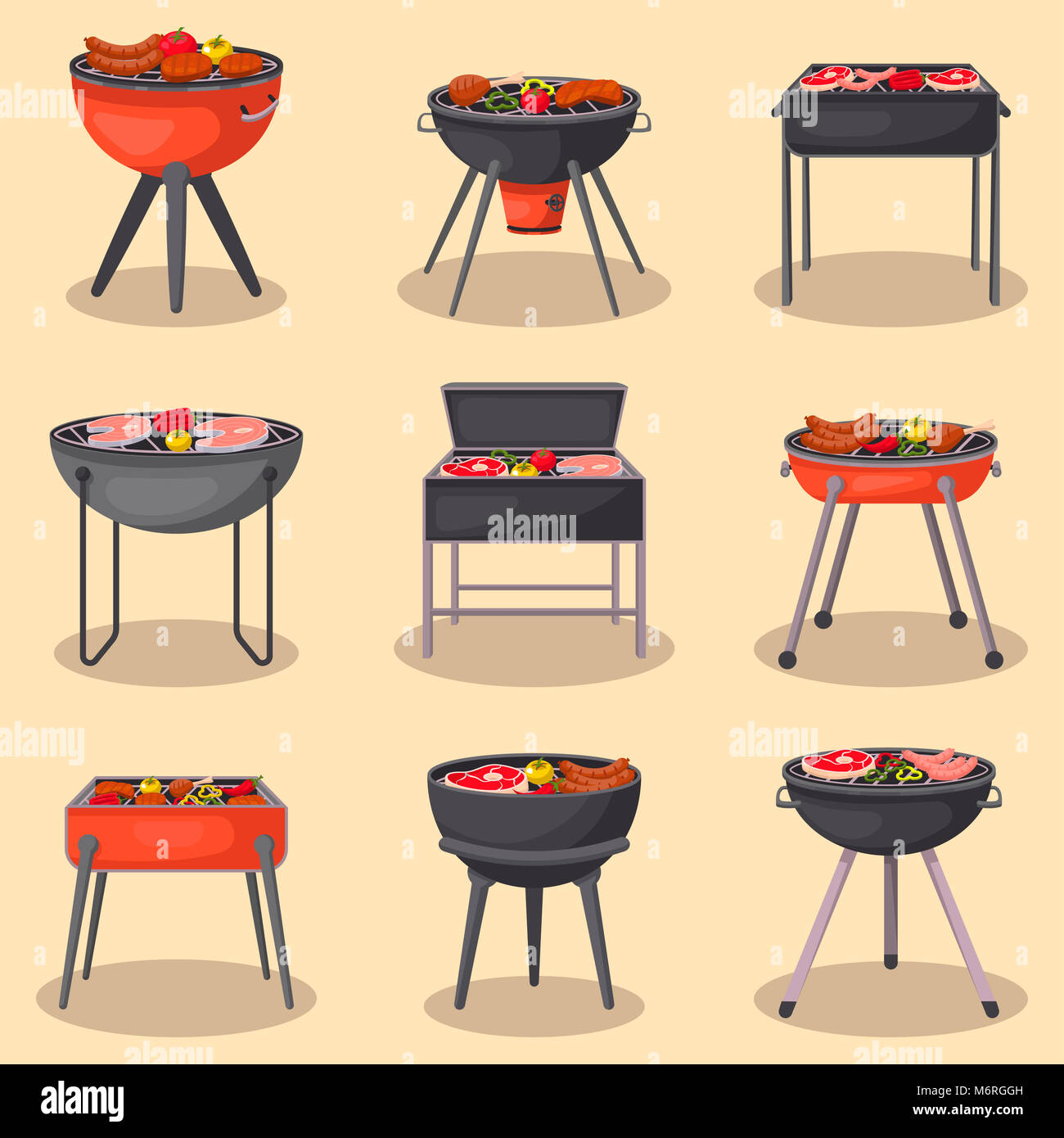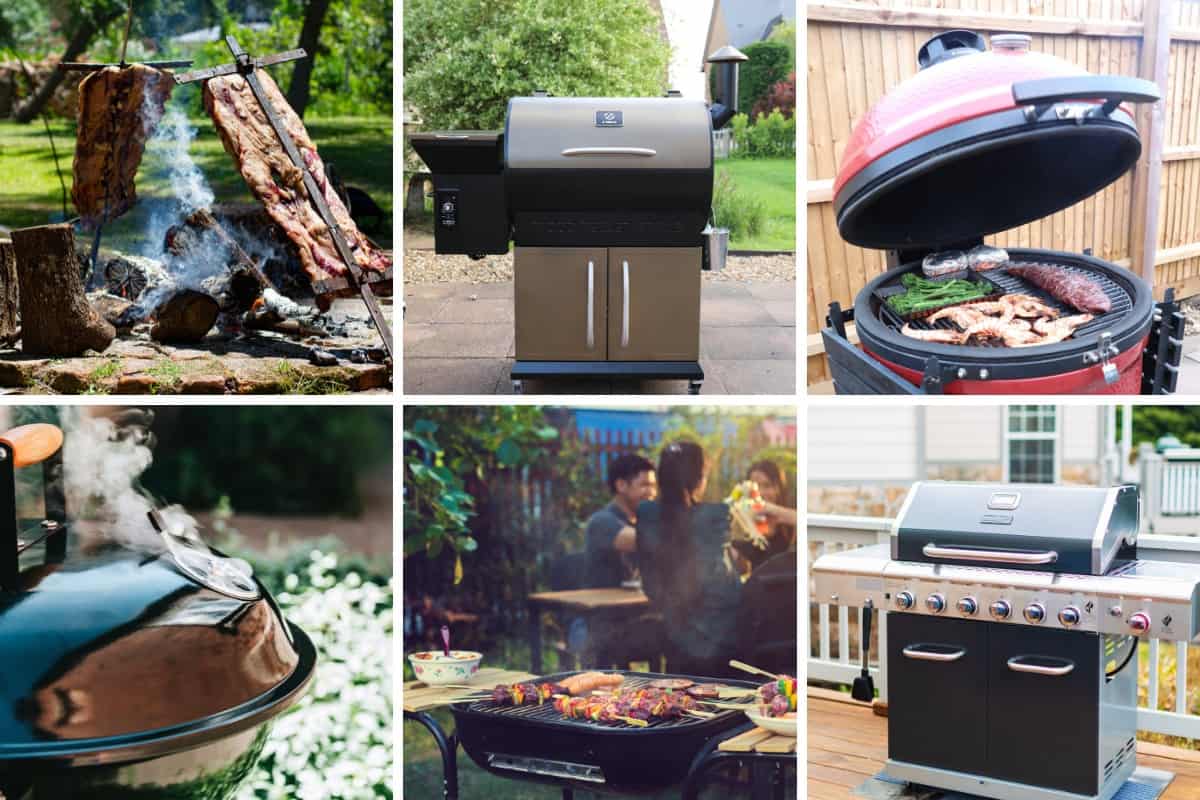When it comes to outdoor cooking, selecting the right grill can greatly impact your culinary experience. With several types available, each offering unique benefits suited to different cooking styles and needs, making an informed choice ensures you get the most out of your grill. Let’s explore the main types of grills, assessing their strengths, limitations, and best use cases.
Charcoal Grills: Classic Flavor and High Heat
Charcoal grills are renowned for delivering an authentic smoky flavor that’s hard to match. Powered by either briquettes or lump charcoal, these grills reach high temperatures, making them ideal for traditional grill enthusiasts.
Advantages:
- Signature Flavor: Imparts a unique smoky taste that appeals to grilling purists.
- Intense Heat: Capable of reaching very high temperatures, perfect for searing.
- Portability: Compact and easy to transport, suitable for small spaces and outdoor adventures.
- Budget-Friendly: Typically more affordable than other grill types.
Limitations:
- Preheat Time: Requires 20-40 minutes to heat up, making cooking times longer.
- Cleanup: Ash and used charcoal can be messy to handle.
- Temperature Control: Achieving precise heat control can be challenging.

Gas Grills: Quick and Efficient Cooking
Powered by propane or natural gas, gas grills are favored for their ease of use and efficiency. With quick ignition and temperature control, they’re a top choice for hassle-free grilling.
Advantages:
- User-Friendly: Ignites instantly and heats up quickly, ideal for last-minute grilling.
- Temperature Precision: Simple knob adjustments make it easy to control heat.
- Minimal Cleanup: Less ash and smoke mean easier maintenance.
- Versatility: Many models include add-ons like side burners and rotisserie options.
Limitations:
- Flavor Trade-Off: Lacks the rich smoky taste of charcoal grilling.
- Higher Cost: Generally pricier than charcoal grills, especially natural gas models.
- Fuel Dependency: Requires propane or a natural gas line, which can limit mobility.
Electric Grills: Great for Indoor or Limited Spaces
Electric grills are powered by a heating element, making them perfect for indoor use or areas where fire restrictions apply. They’re popular among urban dwellers seeking convenient grilling options.
Advantages:
- Effortless Operation: Simply plug in, no need for fuel or preheating.
- Indoor/Outdoor Flexibility: Can be used year-round in various settings.
- Compact Design: Space-saving size works well for small balconies or kitchens.
Limitations:
- Lacks Smoky Flavor: Doesn’t produce the same taste as charcoal or gas.
- Moderate Heat Levels: Doesn’t reach high enough temperatures for efficient searing.
- Electric Dependency: Needs an outlet, limiting use in remote locations.

Pellet Grills: Combining Flavor with Precision
Pellet grills use wood pellets for fuel and feature electronic controls for steady pellet feeding, offering both smoky flavor and precise temperature control for versatile cooking.
Advantages:
- Distinct Wood-Fired Flavor: Delivers a rich, smoky taste with consistency.
- Temperature Accuracy: Digital controls provide fine-tuned temperature adjustments.
- Multifunctional: Can be used as a grill, smoker, or oven.
Limitations:
- Price: Often more expensive than charcoal or gas grills.
- Electric Requirement: Needs power for the pellet feeder and control system.
- Maintenance Needs: Regular cleaning of the pellet hopper and auger is required.
Kamado Grills: High Heat Retention and Versatility
Known for their ceramic construction, Kamado grills are excellent at retaining heat, making them versatile for smoking, baking, or grilling. They offer the efficiency of charcoal with added cooking flexibility.
Advantages:
- Superior Heat Retention: Ceramic walls keep heat steady for even cooking.
- Fuel Efficiency: Uses less charcoal, thanks to excellent insulation.
- Wide Temperature Range: Suitable for a range of cooking techniques.
- Built to Last: Durable ceramic construction ensures longevity.
Limitations:
- Higher Cost: Typically more expensive than standard charcoal grills.
- Less Portable: Heavier due to ceramic material, making them harder to move.
- Learning Curve: Temperature control may take some practice to master.
Portable Grills: Perfect for Grilling on the Go
Designed for easy transport, portable grills are ideal for campers, tailgaters, and anyone who enjoys grilling away from home. They come in various fuel options to match different preferences.
Advantages:
- Easy to Transport: Lightweight and compact, perfect for travel.
- Fuel Options: Available in charcoal, gas, and electric, catering to different needs.
- Affordable: Generally less expensive than larger, full-featured grills.
Limitations:
- Limited Cooking Space: Smaller cooking area restricts food capacity.
- Heat Control Challenges: Often lacks precise temperature control options.
Choosing the Right Grill
Selecting the best grill depends on your cooking preferences, available space, and lifestyle. Here’s a quick recap:
- Charcoal Grills: Best for those who prioritize smoky flavor.
- Gas Grills: Ideal for quick, versatile, and convenient cooking.
- Electric Grills: Perfect for indoor grilling and restricted spaces.
- Pellet Grills: Great for wood-fired flavor and temperature precision.
- Kamado Grills: Suited for seasoned grillers seeking versatility and heat efficiency.
- Portable Grills: Excellent for grilling on the go.
Conclusion
Each type of grill brings unique benefits and limitations, catering to different cooking styles and preferences. Whether you value the classic smoky flavor of charcoal, the convenience of gas, or the precision of a pellet or Kamado grill, understanding each grill’s strengths can guide you toward the best choice. Select the one that aligns with your lifestyle, ensuring each meal is an enjoyable outdoor cooking experience.
